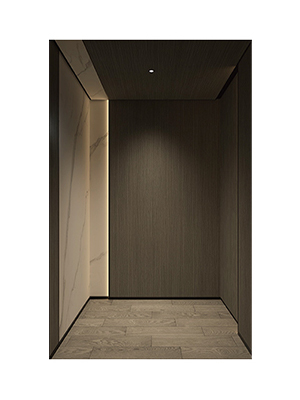Observation elevators, also known as panoramic or glass elevators, are a popular feature in modern commercial buildings, hotels, shopping malls, and tourist attractions. Their appeal lies not only in functionality but also in their aesthetic design, offering passengers a panoramic view of their surroundings. However, a common question arises: is it complicated to install an observation elevator? The answer depends on several factors, including building design, elevator type, safety requirements, and professional expertise.
1. Understanding Observation Elevators
Observation elevators are different from standard elevators due to their transparent walls and often panoramic design. They are engineered to provide an unobstructed view, which requires specialized glass panels, structural support, and precise alignment. Many observation elevators also incorporate advanced features such as LED lighting, automated control systems, and high-speed motors, which add complexity to the installation process compared to traditional elevators.
2. Structural and Space Requirements
One of the primary challenges in installing an observation elevator is ensuring proper structural support. Transparent glass panels and panoramic cabins require reinforced shafts and robust framework to safely bear passenger loads. Architects and engineers must carefully evaluate the building’s structure to determine whether retrofitting an elevator is feasible or whether new construction is necessary. In some cases, additional reinforcement of floors and ceilings may be required, which can increase installation complexity.
3. Mechanical and Electrical Systems
Observation elevators typically use advanced mechanical and electrical systems, such as traction or hydraulic lifts, computerized control panels, and safety sensors. Installing these systems requires skilled technicians to ensure proper alignment, calibration, and integration with building power supplies. Precise installation is crucial for smooth operation, passenger comfort, and safety compliance. Wiring, control systems, and safety interlocks must meet strict industry standards and local building codes.
4. Glass Panels and Safety Features
The hallmark of observation elevators is their glass cabins. Installing large glass panels requires careful handling to prevent damage. The panels must be securely fastened within the elevator frame, and joints must be sealed to prevent air or water leaks. Safety features such as emergency brakes, interlocks, and load sensors must be fully operational to comply with safety regulations. These considerations make the installation process more detailed than standard elevators.
5. Professional Expertise
Observation elevator installation is not a DIY project. It requires trained professionals, including elevator engineers, structural engineers, and certified installers. Coordination among various teams—construction, electrical, mechanical, and safety inspectors—is critical to ensure a successful installation. Companies specializing in observation elevators often provide comprehensive services, including site assessment, design customization, installation, and post-installation testing.
6. Time and Cost Factors
Due to the complexity of structural requirements, specialized components, and skilled labor, installing an observation elevator typically takes longer and costs more than installing a standard elevator. Depending on the building size, elevator type, and customization level, installation can range from several weeks to a few months. Proper planning, project management, and adherence to safety regulations are essential to avoid delays and cost overruns.
7. Advantages Despite Complexity
While installing an observation elevator is more complicated than a standard lift, the benefits often outweigh the challenges:
- Aesthetic appeal: Adds a modern, luxurious look to buildings.
- Enhanced user experience: Provides panoramic views, creating a unique experience for passengers.
- Property value: Increases commercial and residential property value due to its visual and functional appeal.
- Customization: Offers flexibility in cabin design, lighting, and materials.
These advantages make the investment in careful installation worthwhile for commercial spaces, hotels, and tourist attractions.
Conclusion
Installing an observation elevator is inherently more complex than a standard elevator due to structural requirements, glass panel handling, advanced mechanical and electrical systems, and strict safety compliance. However, with professional expertise, detailed planning, and proper coordination, the installation process can be managed efficiently. While it requires skilled technicians, precise alignment, and a longer installation period, the resulting elevator provides both functional and aesthetic benefits, offering a unique passenger experience and enhancing the overall value of the building.












